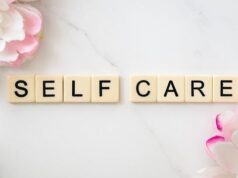In the intricate web of human relationships, moments of vulnerability often surface, prompting requests for support framed in the simple yet profound statement, “I need you.” Responding to this heartfelt plea can evoke various emotions, from empathy to anxiety, making it essential to approach such situations with care and understanding. Whether it’s a friend seeking comfort, a partner expressing dependence, or a family member reaching out for help, the way we reply can significantly impact the dynamics of the relationship. This article will explore effective and compassionate ways to respond to someone’s need for support, ensuring that your reaction fosters connection and understanding, rather than apprehension or dismissal. By embracing active listening, thoughtful engagement, and emotional intelligence, we can transform the act of responding into an opportunity for deeper connection and mutual growth.
Understanding the Context Behind the Request
When someone expresses a need for your support or presence, it’s essential to pause and consider the deeper implications of their request. This phrase can signify a range of emotions and contexts, from vulnerability to urgency. Understanding what stands behind the words “I need you” can guide your response more effectively. Are they seeking emotional support? Do they require assistance with a task? Reflecting on these questions can provide clarity about their true intentions and feelings.
Context is key, and taking the time to analyze the situation can lead to more meaningful interactions. Consider the following factors when processing their request:
- Relationship dynamics: What is your history with this person? How does that influence their request?
- Timing and circumstances: Are there specific events that might make their need more pronounced?
- Communication style: Is this a typical pattern of interaction for them, or is it a departure from their usual demeanor?
By weighing these elements, you can tailor your response to be not just appropriate, but also compassionate and supportive.
Recognizing Emotional Signals in the Plea
Emotional signals in a plea often present themselves through subtle cues, revealing deeper needs that may not be explicitly stated. When someone says “I need you,” their tone, body language, and choice of words can provide insight into their emotional state. Key indicators to observe include:
- Voice Inflection: A wavering or shaky tone may indicate vulnerability or desperation.
- Body Language: Open gestures or direct eye contact can signal sincerity, while crossed arms or avoidance may suggest discomfort.
- Word Choice: The inclusion of words like ”always” or “never” might suggest a heightened sense of urgency or importance to them.
In understanding these signals, empathy plays a crucial role in responding effectively. Acknowledge the emotions behind their plea by validating their feelings. This can be achieved by reflecting back what they’ve expressed and confirming that their needs are heard. Effective responses can include:
- Active Listening: Show genuine interest in their feelings without interruption.
- Reassurance: Communicate your willingness to support them and that they are not alone.
- Open-ended Questions: Encourage them to elaborate by asking how you can help or what they need at the moment.
Assessing Your Own Availability and Readiness
When faced with a request like “I need you,” it’s essential to pause and evaluate whether you can genuinely respond to that need. Availability is about more than just having free time; it involves considering your current commitments and emotional bandwidth. Are you swamped with work or personal responsibilities? Are you feeling particularly drained or overwhelmed? Reflect on these questions to determine if you are in a position to provide the support required. Often, it’s beneficial to jot down your ongoing obligations and assess how they stack against the unexpected request.
Equally important is your readiness to engage. This goes beyond logistics and taps into your mental and emotional state. Ask yourself if you feel equipped to offer the help that’s being requested. This could include considering your mood, stress levels, and overall capacity for empathy at that moment. By acknowledging your own limitations and strengths, you can respond more thoughtfully. You might even find it useful to create a quick checklist of factors that contribute to your readiness, such as:
- Mental clarity
- Emotional stability
- Physical energy levels
Cultivating Active Listening Skills
To truly connect with someone who expresses the feeling of needing you, is crucial. This involves more than just hearing the words; it’s about being present and engaged in the moment. Practice the following techniques to improve your understanding:
- Maintain eye contact to show you are focused on the speaker.
- Nod or provide verbal affirmations to encourage them to continue sharing.
- Avoid interrupting and let them finish their thoughts before responding.
Active listening also demands empathy, allowing you to grasp the underlying emotions and needs behind the words. By doing so, you create a safe space for the speaker to express themselves fully. Consider implementing these strategies:
- Ask clarifying questions to ensure you understand their point of view.
- Reflect back what you’ve heard to validate their feelings and confirm accuracy.
- Be mindful of your body language, as it can convey openness and understanding.
Exploring Different Ways to Offer Support
When someone reaches out with a heartfelt “I need you,” it’s essential to respond with empathy and understanding. Offering support can take many forms, depending on the situation and the individual’s needs. Here are some effective ways to provide assistance:
- Listen Actively: Give your full attention, validating their feelings without interrupting.
- Provide Practical Help: Offer your time or resources, whether helping with daily tasks or providing emotional support.
- Encourage Open Communication: Facilitate honest conversations to understand their needs better.
Additionally, your approach to support can significantly impact the person in need. It’s vital to avoid making assumptions about what they want or need. Tailoring your support to their specific circumstances can foster deeper connections and enhance trust. Consider the following strategies:
- Be Available: Sometimes, just being there without any expectations can be incredibly supportive.
- Share Resources: If appropriate, suggest books, articles, or community services that can offer further assistance.
- Follow Up: Check in later to demonstrate that you care and are there for them over the long term.
Setting Boundaries Without Guilt
When someone expresses a need for your help or support with the phrase “I need you,” it can often create an internal conflict. You may feel an immediate urge to respond positively, but it’s crucial to pause and assess your capacity to engage. Remember, establishing boundaries is an act of self-care. By acknowledging your own limitations, you empower yourself to give a genuine response without compromising your well-being. Here are some ways to articulate your boundaries while remaining empathetic:
- Acknowledge their feelings: Start by validating their need for support.
- Express your situation: Briefly explain your current availability or emotional capacity.
- Offer alternatives: Suggest different ways they might find the support they need, whether through others or at a different time.
It’s essential to approach such conversations with a mindset that prioritizes both your needs and theirs equally. Communicating your boundaries does not mean you are being unsupportive. Instead, it demonstrates respect for your own resources and promotes healthier relationships. Consider the following techniques to maintain this balance:
- Use “I” statements: Frame your responses to reflect your feelings and experiences, making them less accusatory and more personal.
- Stay firm but kind: If you choose to decline a request, do so with compassion and clarity.
- Practice self-reflection: After these interactions, reflect on how they felt and what boundaries may need reinforcement in the future.
Tailoring Your Response to the Relationship
When someone expresses a need for support, the way you respond can significantly impact the relationship. Consider the nature of your connection with this person; whether it is a close friend, a colleague, or a family member, your reply should reflect the depth of that relationship. For example, if it’s a close friend, you might choose to respond with warmth and affirmation, saying something like, “I’m here for you, what do you need?” This not only conveys reliability but also encourages openness and trust. In contrast, with a colleague, a more reserved yet supportive approach might be advisable, such as, “I’m happy to help—let’s discuss how I can assist you.”
Moreover, the context in which the request is made plays a crucial role. Authenticity in your response should align with both your feelings and the current situation. If the person is going through a tough time, acknowledging their distress while offering your support can help deepen the bond. Consider incorporating specific actions that you can take to assist them, such as:
- “I can help with the project deadlines we discussed.”
- “Let’s meet after work to talk this through.”
- “I’m just a call away if you need someone to listen.”
This way, your response is tailored not just to the request but also to the existing relationship, fostering a stronger, more supportive dynamic.
Encouraging Open Communication and Clarity
Responding to someone’s plea of “I need you” is an opportunity to strengthen bonds through open communication. Begin by encouraging them to express their thoughts and feelings. Create a safe environment where they can share openly, without fear of judgment. You might say:
- “Tell me what you’re feeling.” This prompts them to articulate their needs.
- “How can I support you?” This shows you are ready to listen and act.
- “I’m here for you.” A reassurance that underscores your commitment.
By promoting clarity in your dialog, you establish a foundation of trust. Listening actively and validating their experiences not only enhances understanding, but also enables both parties to identify solutions collaboratively. Following up with questions like:
- “What do you need from me right now?”
- “What does support look like for you?”
This engagement fosters a culture of openness and allows for clarity, ensuring both of you feel valued and understood in the exchange.
Ways to Follow Up After Your Initial Response
Following up after your initial response is essential to maintain engagement and demonstrate your commitment. After acknowledging the needs expressed, consider outlining the next steps to keep the momentum going. Use a structured approach in your communication. You could:
- Summarize key points from your initial discussion to reinforce understanding.
- Propose specific actions for the next meeting or communication, ensuring clarity on expectations.
- Ask open-ended questions that invite further dialog and involvement.
In addition, timing and consistency are vital when following up. A well-timed follow-up should show sensitivity to the recipient’s schedule. You might choose to:
- Set reminders for yourself to check in after a designated period.
- Be adaptable by adjusting your follow-up method based on the recipient’s preferences, whether it’s email, phone, or in-person.
- Personalize your message to make them feel valued and understood.
Building Trust Through Consistent Support
When someone reaches out with an “I need you,” it reveals vulnerability and seeks connection. By consistently offering support, you not only respond to their immediate need but also lay the groundwork for trust. Building trust through reliable support means actively listening to their concerns, validating their feelings, and providing actionable solutions when possible. This can include:
- Being present: Make time for them without distractions.
- Offering emotional support: Show empathy and understanding.
- Providing practical help: Assist with specific tasks or challenges they face.
Consistency is the key to reinforcing this trust over time. By regularly checking in and following up on past discussions, you demonstrate that you genuinely care about their well-being. Additionally, by maintaining transparency and being honest about your own capabilities to assist them, you manage expectations effectively. This fosters an environment where they feel valued and respected, leading to a stronger bond. You can ensure this by:
- Following through: Deliver on your promises consistently.
- Encouraging open communication: Invite them to express their needs and concerns freely.
- Recognizing their progress: Celebrate their small victories to foster encouragement.
Reflecting on Your Own Needs in the Process
In moments when someone expresses their need for you, it’s essential to pause and consider your own emotional and practical needs. Acknowledging these feelings allows you to create a more balanced response. Ask yourself:
- What do I need right now?
- Am I in a position to provide support without compromising my well-being?
- How does this request align with my values and boundaries?
Recognizing your needs is not selfish; it’s a critical part of maintaining healthy relationships. When you take the time to reflect, you equip yourself to respond more genuinely and effectively.
Moreover, understanding your needs can lead to clearer communication. You might find that you need to express certain limitations or requirements in your response. Consider the following points:
- Your emotional capacity: Are you feeling overwhelmed or drained?
- Time constraints: Do you have the time to invest in this person’s needs?
- Support systems: Are there other resources or individuals who can assist?
By articulating your own needs alongside those of others, you foster an environment of mutual respect and understanding, paving the way for healthier interactions in the future.
Insights and Conclusions
As we navigate the intricate dance of communication, knowing how to respond to the phrase ”I need you” can open up a world of connection and intimacy. Whether you choose to respond with playful flirtation, heartfelt sincerity, or unwavering support, each reply carries the potential to deepen your bond and foster understanding. The beauty lies in the authenticity of your response; your words can reveal layers of emotion and pave the way for more meaningful conversations. So, the next time you receive that heartfelt message, take a moment to reflect on your feelings, and craft a reply that resonates with both you and the other person. After all, every interaction is a chance to express vulnerability and strengthen relationships, one text at a time.




